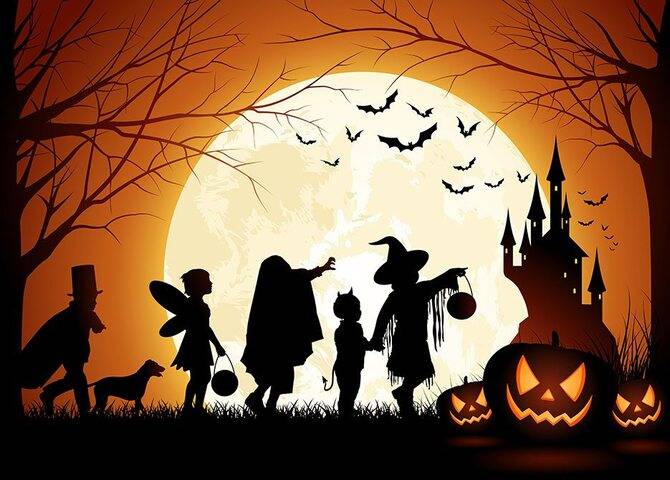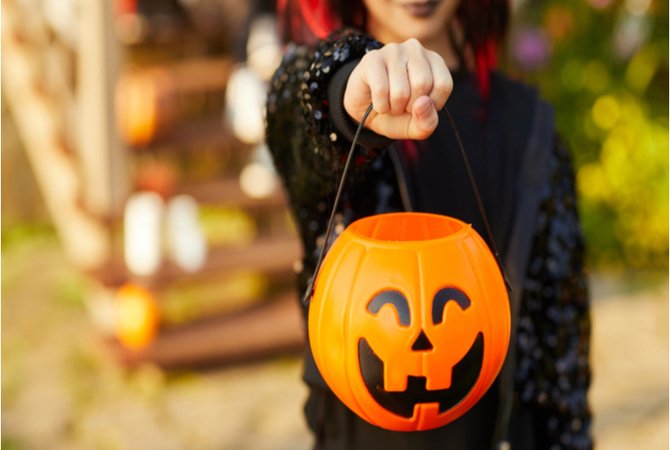Halloween is a holiday observed annually on October 31 to mark the eve of the Christian feast of All Hallows’ Day (Feast of All Saints), followed in honor of all the church’s saints. It is primarily observed in Western countries.
The custom of Halloween, also known as Halloween (a contraction of “All Hallows’ evening”), is said by historians to have its roots in an old Celtic festival where people lighted bonfires and donned costumes to stave off spirits.
As a result, people still dress up for Halloween day, hand out candy to one another as part of “trick-or-treating,” carve pumpkins, and generally gather festively to stave off evil. If you are wondering how many days until Halloween, it is about to come.
Table of Contents
Why do we celebrate Halloween day?

Halloween’s base can be found in the historic Samhain festival of the Celts (pronounced sow-in). On November 1, the Celts, who lived 2,000 years ago in a region that is today primarily Ireland, the United Kingdom, and northern France, celebrated the beginning of their new year.
On this day, summer, harvest, and the gloomy, chilly winter, sometimes a season of fatalities for people, came to an end. The night before the New Year, according to the Celts, the line separating the living from the dead becomes hazy.
On the evening of October 31, they observed Samhain, a time when it was thought that the spirits of the dead made a comeback to the planet.
Celts believed that the presence of supernatural spirits made it simpler for the Druids, or Celtic priests, to make future forecasts, in addition to causing difficulties and harming harvests. These forecasts served as a significant source of solace for a people wholly reliant on the unpredictable natural environment during the long, dark winter.
Druids constructed enormous sacred bonfires to remind of the occasion, and people gathered around them to burn crops and animals as sacrifices to the Celtic gods. The Celts attempted to tell one other’s fortunes while dressing up in costumes made typically of animal heads and skins.
They re-lit the fires of the hearth, which they had put out earlier that evening, from the sacred bonfire after the festival was done to help safeguard them during the upcoming winter. The majority of Celtic lands had been captured by the Roman Empire by 43 A.D. Throughout their 400-year reign over the Celtic nations, two Roman-inspired holidays were merged with the customary holiday of Samhain.
The first was Feralia, a Roman rite in late October to remember the deceased. Pomona, the Roman goddess of trees and fruits, was celebrated on the second day. The apple is Pomona’s emblem; therefore, the fact that this celebration was included in Samhain probably explains why we still bop for apples on Halloween today.
Is Halloween a legal holiday in the U.K.?
One of the oldest holidays is Halloween. Despite having religious roots, it is now observed as a cultural festival by people of various religious backgrounds. Different nations all around the world have their unique ways of celebrating this event.
Many countries celebrate the holiday under other names and do not do so on October 31.
Halloween Day, observed on October 31 in the U.S., is well-liked by both kids and adults. It’s common amusement to tell scary stories, watch scary movies, and carve pumpkins into jack-o-lanterns.
Trick-or-treating is a Halloween tradition where children dress up and visit houses while yelling “trick or treat” and asking for sweets in exchange. Rules in Canada and Ireland are comparable.
Trick-or-Treating History

By adopting European customs, Americans started dressing up for Halloween and knocking on doors to ask for food or money. This practice eventually developed into the modern-day “trick-or-treat” custom. Young girls thought that by performing tricks with yarn, apple parings, or mirrors on Halloween, they could predict their future husbands’ names or looks.
In the 1800s, there was a movement in America to change Halloween day from a celebration of ghosts, tricks, and witchcraft to more about neighborhood and community gatherings. Halloween parties for kids and adults were the most popular way to commemorate the holiday at the turn of the century. Parties with games, seasonal delicacies, and festive attire.
Newspapers and local authorities urged parents to remove anything “scary” or “grotesque” from Halloween day celebrations. By the start of the twentieth century, Halloween had mainly lost its superstitious and religious connotations due to these efforts.
Matchmaking for Halloween Day and Unusual Rituals
But what about the Halloween day customs and rituals that today’s trick-or-treaters have entirely forgotten? Many of these outmoded rites emphasize the present rather than the past and the living rather than the dead.
Many of them, in particular, dealt with encouraging young women to find their future spouses and telling them that they would eventually be married—hopefully by next Halloween. On Halloween night, a matchmaking cook in 18th-century Ireland may conceal a ring in her mashed potatoes, hoping the diner who found it would find true love.
In Scotland, matchmakers advised young women to name a hazelnut for each potential suitor before throwing the nuts into the flames. According to the legend, the nut that burned to ashes instead of popping or exploding symbolized the girl’s future husband. (In specific iterations of this myth, the reverse was true: The burning nut represented a fleeting love.) Another legend claimed that a young woman would dream of her future spouse if she consumed a sugary mixture of walnuts, hazelnuts, and nutmeg before going to bed on Halloween night.
Young girls tried to predict their futures by peering at egg yolks floating in a bowl of water, tossing apple peels over their shoulders in the hopes that the peels would fall to the ground in the shape of their future husbands’ initials, carrying candles in front of mirrors in dark rooms, and looking over their right shoulder for one’s husbands’ faces. Other ceremonies featured more rivalry. Occasionally, the first partygoer to find a burr while searching for chestnuts would also be the first to get hitched. Others would have the first successful apple bobber come down the aisle.
How do people of the U.K. celebrate Halloween? And what date is Halloween?
In the U.K., there are parties where attendees are frequently required to arrive dressed in costumes that correspond with the celebration’s theme. Others congregate to see horror movies at home or in a theatre. Some kids participate in trick-or-treating. This implies that individuals get dressed up and knock on doors while visiting other people’s homes in search of treats like candy or snacks. If you don’t distribute treats, you might be misled by a prank.
The base of Halloween can be found in paganism in England, Scotland, Wales, and Ireland. Many shops and companies use Halloween as an opportunity to market goods with a Halloween theme. Halloween is arriving soon, on October 31.


